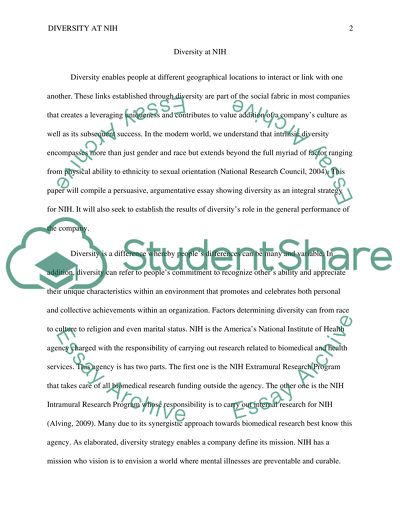Cite this document
(“Diversity at NIH Research Paper Example | Topics and Well Written Essays - 2000 words”, n.d.)
Diversity at NIH Research Paper Example | Topics and Well Written Essays - 2000 words. Retrieved from https://studentshare.org/marketing/1445111-diversity-at-nih
Diversity at NIH Research Paper Example | Topics and Well Written Essays - 2000 words. Retrieved from https://studentshare.org/marketing/1445111-diversity-at-nih
(Diversity at NIH Research Paper Example | Topics and Well Written Essays - 2000 Words)
Diversity at NIH Research Paper Example | Topics and Well Written Essays - 2000 Words. https://studentshare.org/marketing/1445111-diversity-at-nih.
Diversity at NIH Research Paper Example | Topics and Well Written Essays - 2000 Words. https://studentshare.org/marketing/1445111-diversity-at-nih.
“Diversity at NIH Research Paper Example | Topics and Well Written Essays - 2000 Words”, n.d. https://studentshare.org/marketing/1445111-diversity-at-nih.


